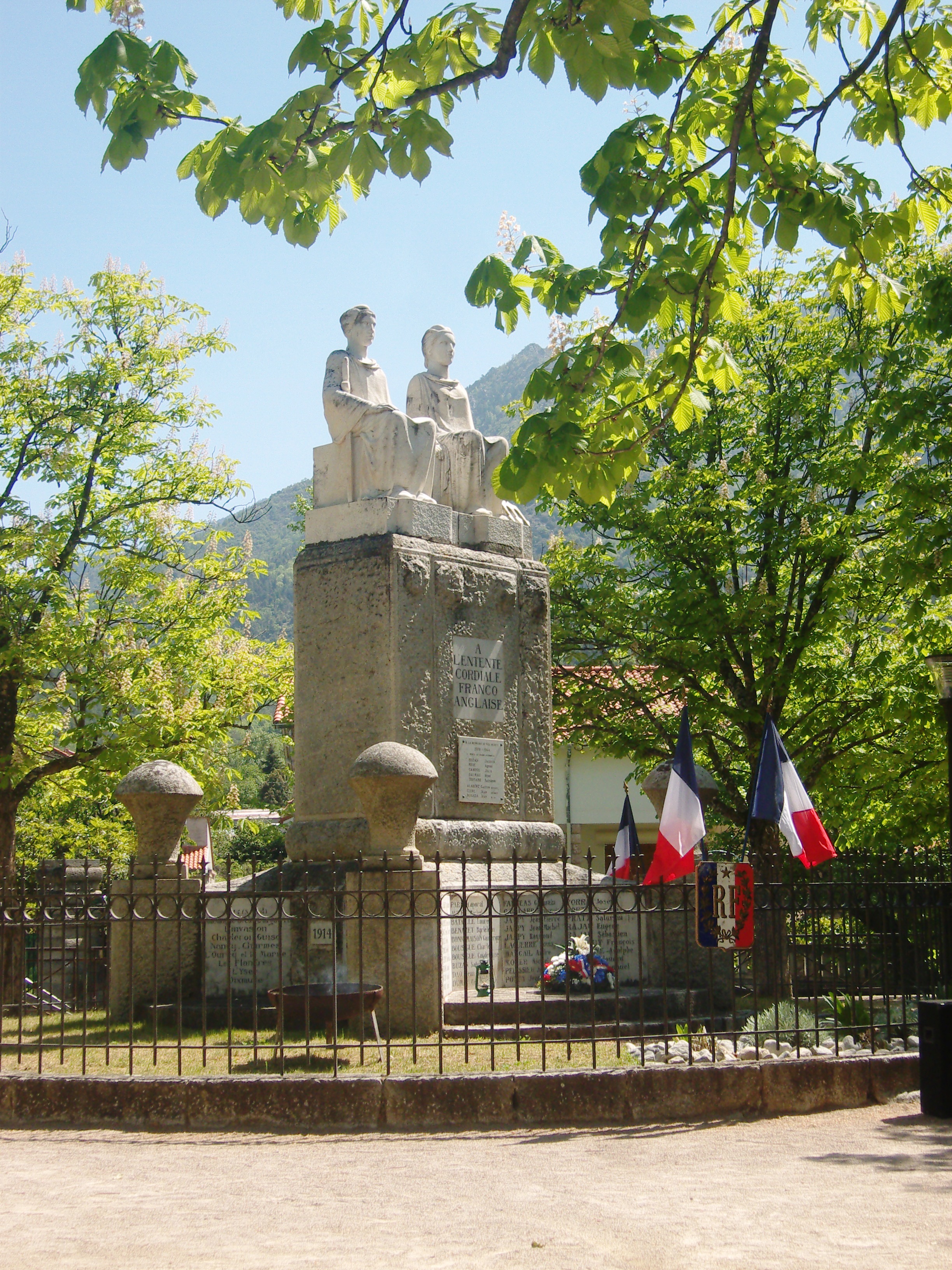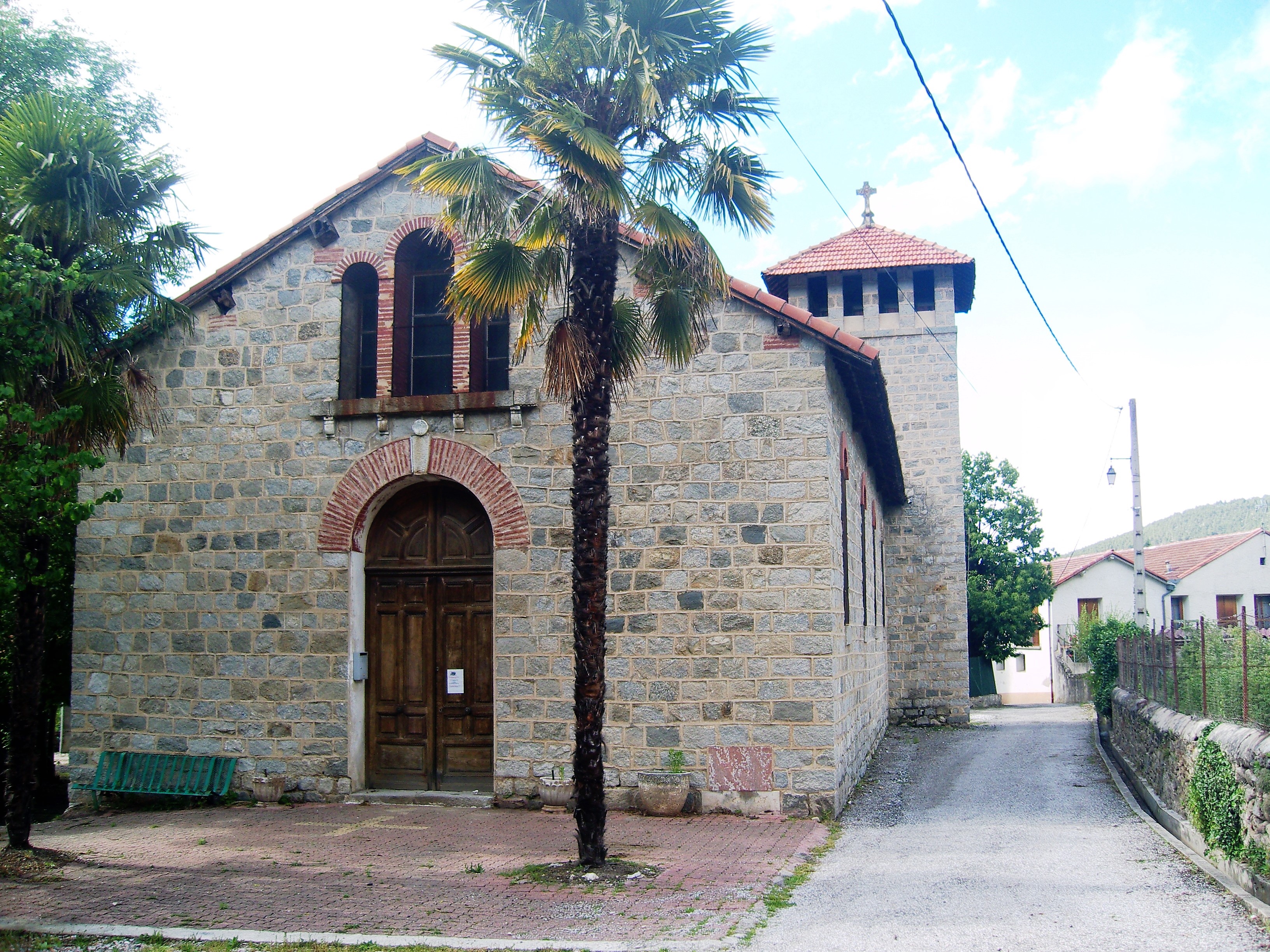Vernet-les-Bains on:
[Wikipedia]
[Google]
[Amazon]
Vernet-les-Bains (; ca, Vernet) is a

 Near the highest point in Vernet-les-Bains, next to the mairie (town hall), stands a monument to the
Near the highest point in Vernet-les-Bains, next to the mairie (town hall), stands a monument to the  "To the Entente Cordiale between France and Britain. To the glory of the Allied Nations. To the memory of soldiers from Vernet who died for their country"
"To the Entente Cordiale between France and Britain. To the glory of the Allied Nations. To the memory of soldiers from Vernet who died for their country"
 St. George's Church is a parish church of the
St. George's Church is a parish church of the  In 2019, St. George's became home to the first peal of change ringing bells in France, and the first ring of ten bells in mainland Europe.
In 2019, St. George's became home to the first peal of change ringing bells in France, and the first ring of ten bells in mainland Europe.

Website of the Vernet les Bains tourist officeWebsite of the Vernet les Bains mairieInformation in English about Vernet-les-Bains, including information about Rudyard Kipling's visits to Vernet.
{{DEFAULTSORT:Vernetlesbains Communes of Pyrénées-Orientales Spa towns in France
commune
A commune is an alternative term for an intentional community. Commune or comună or comune or other derivations may also refer to:
Administrative-territorial entities
* Commune (administrative division), a municipality or township
** Communes of ...
in the Pyrénées-Orientales department in southern France.
It is a centre for visitors and holidaymakers. The village has a sunny climate (with, on average, 300 days of sunshine each year) and is set in a sheltered valley in the foothills of the Canigou
The Canigó ( ca, Canigó, french: Canigou ; la, mons Canigosus or Canigonis) is a mountain located in the Pyrenees of southern France.
The Canigó is located less than from the sea and has an elevation of . Due to its sharp flanks and its dra ...
mountain - which rises to a height of 2,785 metres (over 9,000 feet). Vernet-les-Bains is also known for its hot water springs. There is a professional spa/therapy centre in the village.
Geography
Localisation
Vernet-les-Bains is located in thecanton of Le Canigou The canton of Le Canigou is an administrative division of the Pyrénées-Orientales department, in southern France. It was created at the French canton reorganisation which came into effect in March 2015. Its seat is in Amélie-les-Bains-Palalda.
...
and in the arrondissement of Prades
The arrondissement of Prades is an arrondissement of France in the Pyrénées-Orientales department ( Northern Catalonia) in the Occitanie region. It has 123 communes. Its population is 59,828 (2016), and its area is .
Composition
The communes ...
.

Transport
Close by is theYellow train
The ''Ligne de Cerdagne'', usually referred to as ''Le Petit Train Jaune'' ( en, Little Yellow Train, ca, Tren Groc), is a gauge railway that runs from Villefranche-de-Conflent to Latour-de-Carol-Enveitg in the French Pyrenees. Construction st ...
which runs from Villefranche-de-Conflent
Villefranche-de-Conflent (; ca, Vilafranca de Conflent) is historically a town in the Conflent region of Catalonia, and now a commune in the Pyrénées-Orientales department in southern France.
Geography
Villefranche-de-Conflent is located in ...
up to Mont-Louis and Latour-de-Carol
Latour-de-Carol (; ca, La Tor de Querol) is a commune in the Pyrénées-Orientales department in southern France.
Geography Localization
Latour-de-Carol is located in the canton of Les Pyrénées catalanes and in the arrondissement of Pra ...
. The line has the highest station in France at and is both a lifeline during winter conditions and a tourist attraction.
There is a "local" bus service between Perpignan & Vernet-les-Bains.
Villefranche-de-Conflent is also on a regional train line that connects to Perpignan.
Population
Sites of interest
* Village arboretum de Vernet-les-BainsEntente Cordiale Monument
 Near the highest point in Vernet-les-Bains, next to the mairie (town hall), stands a monument to the
Near the highest point in Vernet-les-Bains, next to the mairie (town hall), stands a monument to the Entente Cordiale
The Entente Cordiale (; ) comprised a series of agreements signed on 8 April 1904 between the United Kingdom and the French Republic which saw a significant improvement in Anglo-French relations. Beyond the immediate concerns of colonial de ...
of 1904. It is the only one of its kind in France.
The pedestal of the monument is made of Canigou granite. On it rest two white marble statues representing France and Britain. The pedestal itself is set upon a circular base. That in turn is located on a raised, level area of ground which covers 1,000 square metres and which is bounded by low stone walls.
The idea of erecting this monument was conceived around 1912 by the town council and its then mayor, Monsieur Joseph Mercader. The wealthy British visitors who regularly came to this health spa at that time actively supported the project. A committee of prominent French and British patrons was set up to promote the scheme. Its leading members were Lord Roberts and General Joffre. Monsieur Lambert-Violet, a leading Perpignan businessman, gave the land for the memorial to Vernet. The monument itself was the work of the Roussillon sculptor Gustave Violet, who displayed a model of his proposed work in 1913. However, progress came to a halt in 1914 with the outbreak of World War One. Little further happened until August 1920, when it was proclaimed by presidential decree that work on the monument would proceed but that it would be dedicated both to the Entente Cordiale and to the memory of those killed during the war. At the same time a new appeal was launched for funds to complete the project.
Work on erecting the monument soon got underway. Granite was hauled up from the bed of the River St-Vincent in carts pulled by oxen. The stonemason, Monsieur Herbetta, worked up to fourteen hours a day, often in the sun's full glare, fashioning and putting into place the enormously heavy blocks of stone. A circle of wrought-iron fencing was erected around the base of the monument. Monsieur Antoine Mercader remembers, as a six-year-old child, how he and other children watched as the craftsman, Monsieur Serra, poured molten lead into small holes in the ground to seal in place the fence's iron bars.
When the monument was completed, it bore the following dedications:
 "To the Entente Cordiale between France and Britain. To the glory of the Allied Nations. To the memory of soldiers from Vernet who died for their country"
"To the Entente Cordiale between France and Britain. To the glory of the Allied Nations. To the memory of soldiers from Vernet who died for their country"
St. Saturnin Church
The Église Saint-Saturnin is a church sitting on a hill with views of the mountains across the river. The church is small and basic, with a sundial on a side wall, and a plaque giving some details of the Church. The plaque states "Chapelle N.D del Puig". A church on this site is first mentioned in 1188 (although the first documented reference to Vernet itself is dated 863).St. George's Church
 St. George's Church is a parish church of the
St. George's Church is a parish church of the Diocese in Europe
The Diocese in Europe (short form for the Diocese of Gibraltar in Europe) is a diocese of the Church of England. It was originally formed in 1842 as the Diocese of Gibraltar. It is geographically the largest diocese of the Church of England and th ...
of the Church of England
The Church of England (C of E) is the established Christian church in England and the mother church of the international Anglican Communion. It traces its history to the Christian church recorded as existing in the Roman province of Britai ...
. It was constructed between 1912 and 1913 due to an influx of English residents to the town. During the 1960s the building closed for repairs, and didn't reopen until 1997, when a retired Anglican priest was asked to re-open the church. The building is constructed in a Romanesque style.
 In 2019, St. George's became home to the first peal of change ringing bells in France, and the first ring of ten bells in mainland Europe.
In 2019, St. George's became home to the first peal of change ringing bells in France, and the first ring of ten bells in mainland Europe.
Walks near Vernet-les-Bains
There are a number of walks from and close to Vernet-les-Bains. It can be used as a base from which to climb to the summit of Canigou.Rudyard Kipling

Rudyard Kipling
Joseph Rudyard Kipling ( ; 30 December 1865 – 18 January 1936)''The Times'', (London) 18 January 1936, p. 12. was an English novelist, short-story writer, poet, and journalist. He was born in British India, which inspired much of his work.
...
, who was awarded the Nobel Prize for literature in 1907, stayed in Vernet-les-Bains in 1910, 1911, 1914 and 1926. At that time, Kipling was well known in France, following the success of the French version of his classic work, The Jungle Book
''The Jungle Book'' (1894) is a collection of stories by the English author Rudyard Kipling. Most of the characters are animals such as Shere Khan the tiger and Baloo the bear, though a principal character is the boy or "man-cub" Mowgli, w ...
.
While he was in Vernet, Kipling wrote about Canigou. In a letter to the Club Alpin, he praised it as a magician among mountains".
Kipling also wrote a light-hearted short story entitled ''Why Snow Falls at Vernet''. It makes fun of the English habit of always talking about the weather.
Today, the central bridge over the River Cady in Vernet-les-Bains is named after Kipling.
The bridge, and the town itself, is featured in the Danish thriller film '' ID:A'' (2011).
See also
*Communes of the Pyrénées-Orientales department
The Pyrénées-Orientales department is composed of 226 communes.
Most of the territory (except for the district of Fenolheda) formed part of the Principality of Catalonia until 1659, and Catalan is still spoken (in addition to French) by a ...
References
External links
Website of the Vernet les Bains tourist office
{{DEFAULTSORT:Vernetlesbains Communes of Pyrénées-Orientales Spa towns in France